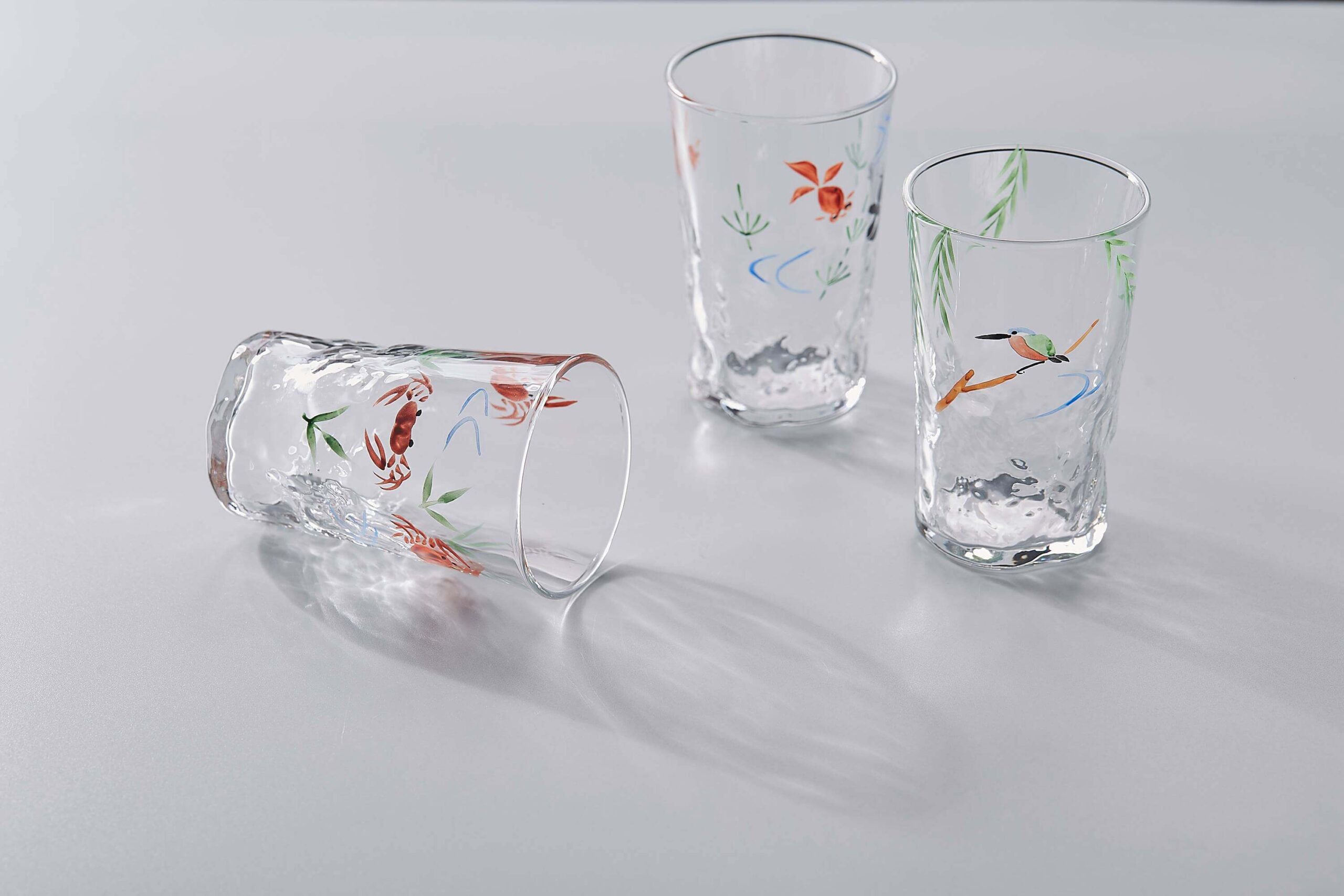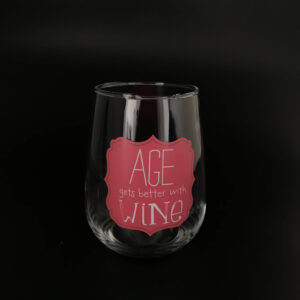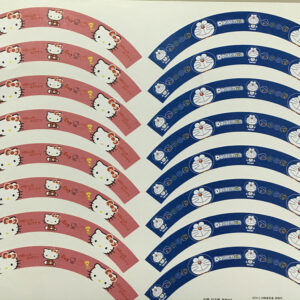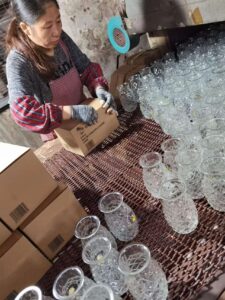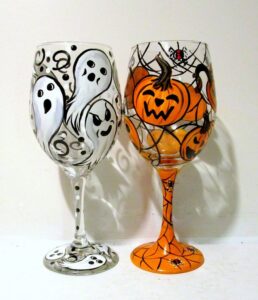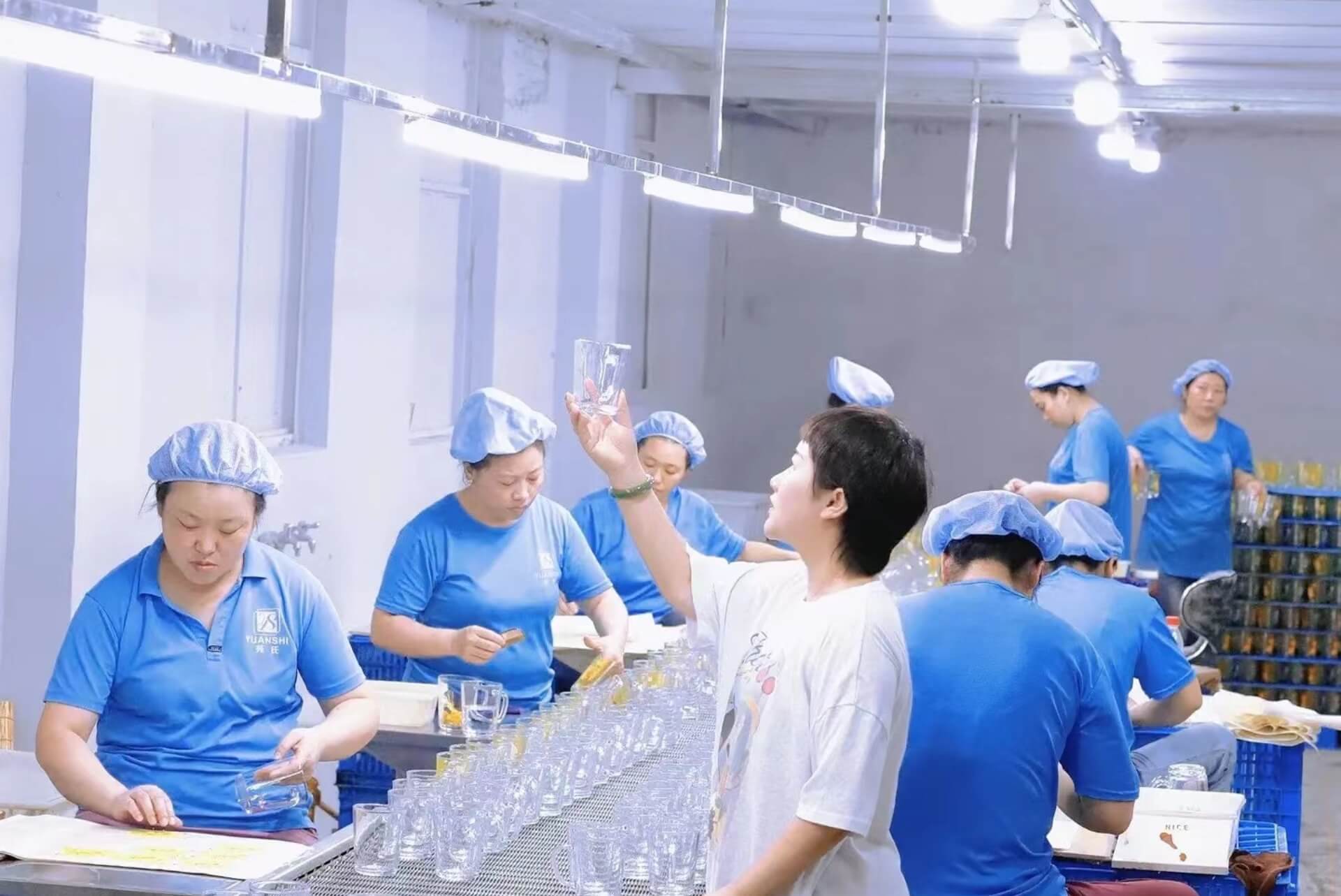Custom printing is an art form that has transcended generations, evolving with technology and creativity. It’s a fascinating world where imagination meets reality, and the following sections will delve into its various aspects.
Different ways to print on drinking glasses are available in the market. Each method can work with various shapes, sizes, and kinds of glasses, and use different colors. While they all have their unique benefits, they also come with their own drawbacks. It’s all about finding what fits best for your needs!
Generally speaking, there are 5 ways: Screen Printing On Drinking Glasses, Decal Applications on Drinking Glasses, Digital Printing on Drinking Glasses, Etching on Drinking Glasses and Hand Painting on Drinking Glasses.
This article will analyze more different ways from How To Produce Colored Glasswares In Large Quantity?
What is Custom Printing on Drinking Glasses?
Custom printing on drinking glasses is the process of applying unique designs, logos, or text onto glass surfaces. It’s a specialized form of printing that requires precision, skill, and an understanding of the materials involved. From elegant wine glasses adorned with intricate patterns to promotional mugs bearing a company’s logo, custom printing on drinking glasses offers endless possibilities for personalization and branding.
Techniques Used in Custom Printing on Drinking Glasses
Type 1: Screen Printing On Drinking Glasses
Screen printing, a time-honored technique, is a vibrant and versatile method of imprinting designs on various surfaces. From t-shirts to posters, from ceramics to drinking glasses, screen printing has left an indelible mark on the world of art and commerce. Let’s explore this fascinating process in depth.
Screen printing on drinking glass is a specialized form of printing that involves applying ink through a mesh screen to create designs on glass surfaces. From promotional glassware bearing company logos to personalized gifts adorned with intricate patterns, screen printing on drinking glass offers endless opportunities for customization and creativity.
source:pinterest.com
Step 1: Preparing the Glass
You could select different types of glasswares by: Lida Glassware. Due to the characters of drinking glasses, the surfaces are smooth to make printings. But the glass must be cleaned and treated to ensure that the ink adheres properly. To know how to clean glass cups, you can refer to: How To Sterilize Your Glass Cups. It is also suitable for mass production.
This often involves using specific chemicals to prepare the surface.
Step 2: Creating the Stencil
A stencil of the desired design is created on a mesh screen. This can be done using various methods, including photo emulsion techniques or hand-cut stencils.
Step 3: Applying the Ink
Specialized glass ink is applied to the screen and then pressed through the mesh using a squeegee. The ink passes through the open areas of the stencil, transferring the design onto the glass.
Step 4: Curing the Ink
The ink must be cured to ensure it bonds with the glass surface. This can be done using UV light or heat, depending on the type of ink used.
Screen printing on drinking glass is a captivating process that transforms ordinary glassware into extraordinary pieces of art. It’s a technique that requires skill, creativity, and an understanding of materials and methods.
Whether it’s a promotional mug for a business or a handcrafted piece by an artist, screen printing on drinking glass offers a world of possibilities. It’s a celebration of creativity, a testament to human ingenuity, and a beautiful way to add color and character to the world around us. In the hands of skilled artisans, the humble drinking glass becomes a canvas, and the possibilities are as boundless as the imagination.
Type 2: Decal Applications on Drinking Glasses
Decal applications on drinking glass represent a delightful intersection of art and functionality. This technique allows for the creation of stunning visuals on glassware, transforming ordinary items into extraordinary pieces. Let’s explore the world of decal applications on drinking glass, uncovering the techniques, possibilities, and the sheer beauty it brings to our daily lives.
Decal applications on drinking glass involve the transfer of designs, often printed on special paper, onto the surface of the glass. It’s a method that has been embraced by artists, businesses, and hobbyists alike for its ability to produce intricate and colorful designs. From commemorative mugs to branded restaurant glassware, decal applications open up a world of creative possibilities.
source: lida
Types of Decals
Water-Slide Decals
Water-slide decals are printed on a special paper that allows the design to slide off when soaked in water. They are known for their ease of application and ability to reproduce detailed images.
Heat Transfer Decals
Heat transfer decals utilize heat to adhere the design to the glass surface. They are often used for more robust applications and can withstand wear and tear.
source: lida
Step 1: Design Creation
The process begins with the creation of a design, which can be hand-drawn or digitally crafted. The design is then printed or cut, depending on the type of decal.
Step 2: Application
Before application, workers need to put decals into clean water (warm water especially in winter). At the same time, all glasses are clean and dry. They are taken on the application table waiting for the wet decals. The workers hold a glass cup using left hand and take one piece of decal by right hand on to the cups. There is a special brush made of rubber, which is used to smooth the decal. The process is finished when the decal is on to the glass cup very smooth.
Step 3: Drying
After finishing the decal process, all finished glasses are put on the shelf. They need to be dried overnight.
Step 4: Baking
Workers will check these glasses in the next day. They check most of the glasses, touching the decals on the glasses. If this part is quite dry. It means it’s time to bake them into the furnance. A furnance is a stove with 20 meters long. Its temperature is controlled by a automatical machine centre. In this furnance, there are three zones with different temperatures. After around 2 hours, all glasses will go through all three zones. The finished glasses are with super bright logos after high temperature baking.
source: lida
Step 5: Packing
The workers at the end of furnace are preparing the packing cartons. They take the glasses into packing boxes quickly after inspecting.
source: lida
Decal applications on drinking glass are a celebration of creativity and personal expression. It’s a technique that allows us to infuse our surroundings with color, meaning, and individuality.
Type 3: Digital Printing on Drinking Glasses
Digital printing on drinking glass is a contemporary method that involves using digital technology to print designs directly onto the surface of the glass. Unlike traditional methods, digital printing offers high-resolution images, quick turnaround times, and the ability to print complex designs with ease. It’s a method that has been embraced by businesses, artists, and enthusiasts for its versatility and efficiency.
source:pinterest.com
Preparing the Glass
The glass surface must be meticulously cleaned and treated to ensure proper adhesion of the ink. Special primers may be used to enhance the bonding process.
Designing the Image
The design is created digitally using graphic design software. This allows for intricate details, color blending, and customization.
Printing the Design
Using specialized digital printers equipped with UV-curable inks, the design is printed directly onto the glass surface. The ink is cured instantly using UV light, creating a durable and vibrant print.
Finishing Touches
Additional finishing processes may be applied, such as adding a protective coating or further embellishments, to enhance the appearance and longevity of the print.
In the world of digital printing on drinking glass, the glass is not merely a container; it’s a canvas. It’s a space where technology meets artistry, where imagination takes physical form, and where every print is a celebration of creativity and connection. It’s a world that beckons us to look beyond the ordinary, to see the potential in every surface, and to raise a glass to the future of art and design.
Type 4: Etching on Drinking Glasses
Etching on drinking glasses is a timeless art form that combines elegance, craftsmanship, and creativity. It’s a method that transforms ordinary glass into extraordinary masterpieces, adding character, beauty, and personal touch. Let’s explore the enchanting world of etching on drinking glasses, delving into its techniques, applications, and the sheer magic it brings to our daily lives.
source:pinterest.com
Chemical Etching
Chemical etching involves using an acid or etching cream to dissolve parts of the glass surface, creating a frosted appearance. It’s known for its precision and ability to reproduce detailed images.
Physical or Sandblasting Etching
Physical etching, often done through sandblasting, uses abrasive materials to physically remove parts of the glass surface. It offers a tactile quality, with the design being felt as well as seen.
Laser Etching
Laser etching utilizes laser technology to etch designs onto the glass. It offers high precision and is suitable for complex designs.
Step 1: Design Creation
The process begins with the creation of a design, either hand-drawn or digitally crafted. The design is then transferred to a stencil or mask that will guide the etching process.
Step 2: Preparing the Glass
The glass must be meticulously cleaned and prepared to ensure a smooth etching process. Any contaminants can interfere with the etching.
Step 3: Applying the Etching Method
Depending on the chosen technique, the etching method is applied. This may involve applying etching cream, sandblasting, or using a laser.
Step 4: Finishing Touches
After etching, the glass may be cleaned and polished to enhance the appearance of the design.
Whether it’s a business seeking to make a statement with etched glassware or an individual crafting a personalized gift, etching offers a pathway to creativity that is both timeless and extraordinary. It’s a process that invites us to explore, to experiment, and to express, turning the mundane into the magnificent.
Type 5: Hand Painting on Drinking Glasses
Hand painting on drinking glasses is the art of applying specialized paints to glass surfaces to create unique and customized designs. It’s a method that has been cherished by artists, hobbyists, and gift-givers alike for its ability to produce one-of-a-kind pieces that resonate with individuality and charm.
source:pinterest.com
Techniques of Hand Painting on Drinking Glasses
Brushwork
Brushwork is the traditional method of applying paint to glass using various types and sizes of brushes. It allows for intricate details, textures, and artistic expression.
Stenciling
Stenciling involves using pre-cut templates to guide the painting process. It’s a method that offers precision and consistency, especially for repetitive designs.
Sponging
Sponging uses sponges to apply paint, creating unique textures and effects. It’s a playful technique that adds depth and interest to the design.
Step 1: Choosing the Right Paint
Specialized glass paints are used to ensure adhesion, durability, and safety. These paints are designed to bond with the glass and are often non-toxic.
Step 2: Design Creation
The design is either hand-drawn or planned using templates. Creativity takes center stage, allowing for personal touches, themes, and artistic flair.
Step 3: Painting the Glass
The paint is carefully applied to the glass using the chosen technique. This may involve multiple layers, blending of colors, and attention to detail.
Step 4: Curing the Paint
The paint must be cured to ensure it bonds with the glass surface. This can be done by air drying or baking the glass, depending on the type of paint used.
Conclusion
Printing on drinking glasses continues to be a sought-after packaging option, resonating with brands that seek to stand out with distinction and premium identity. The process becomes even more accessible and versatile with established glassware makers, as they provide an array of services tailored to various needs.
At Lida, our commitment to excellence is unwavering. We strive to meet our clients’ needs with precision, quality, and creativity. Our team of seasoned experts is here to guide you through every step, ensuring that your vision comes to life in the most spectacular way. Reach out to us, and embark on a journey of creativity and success. Best of luck!

